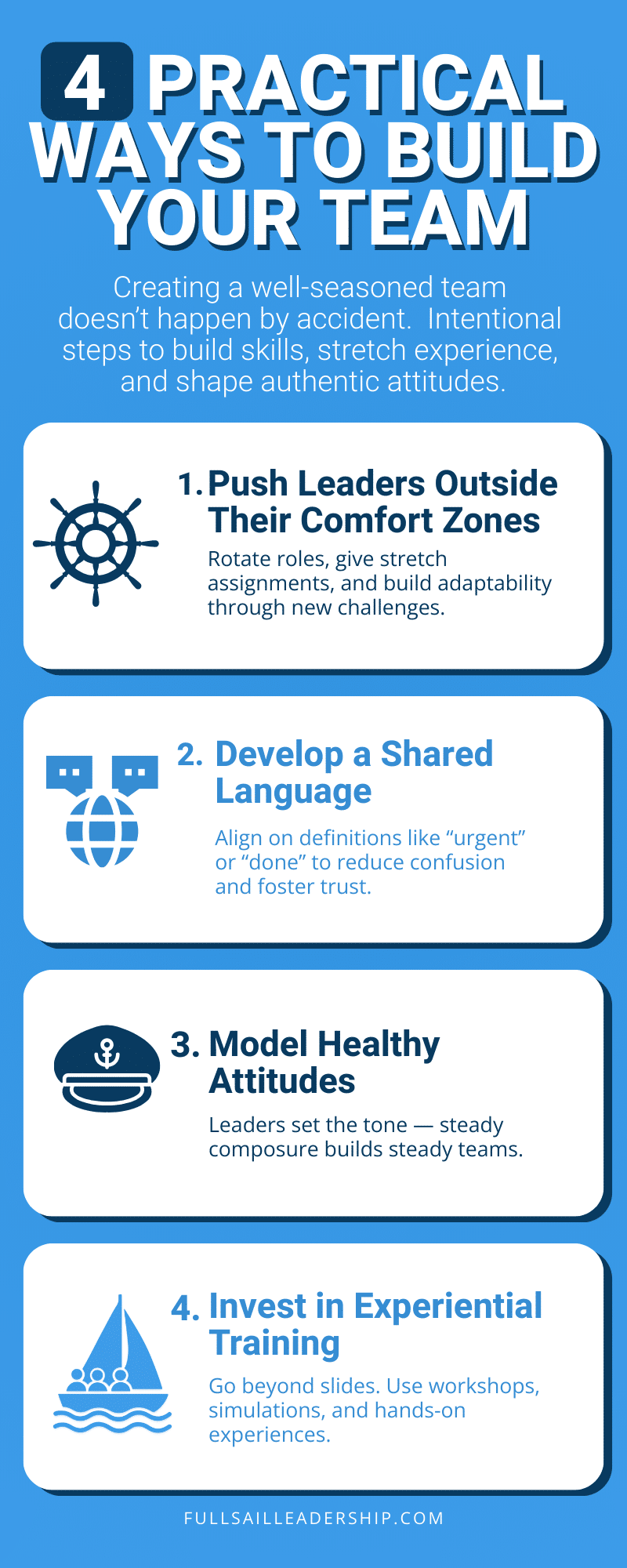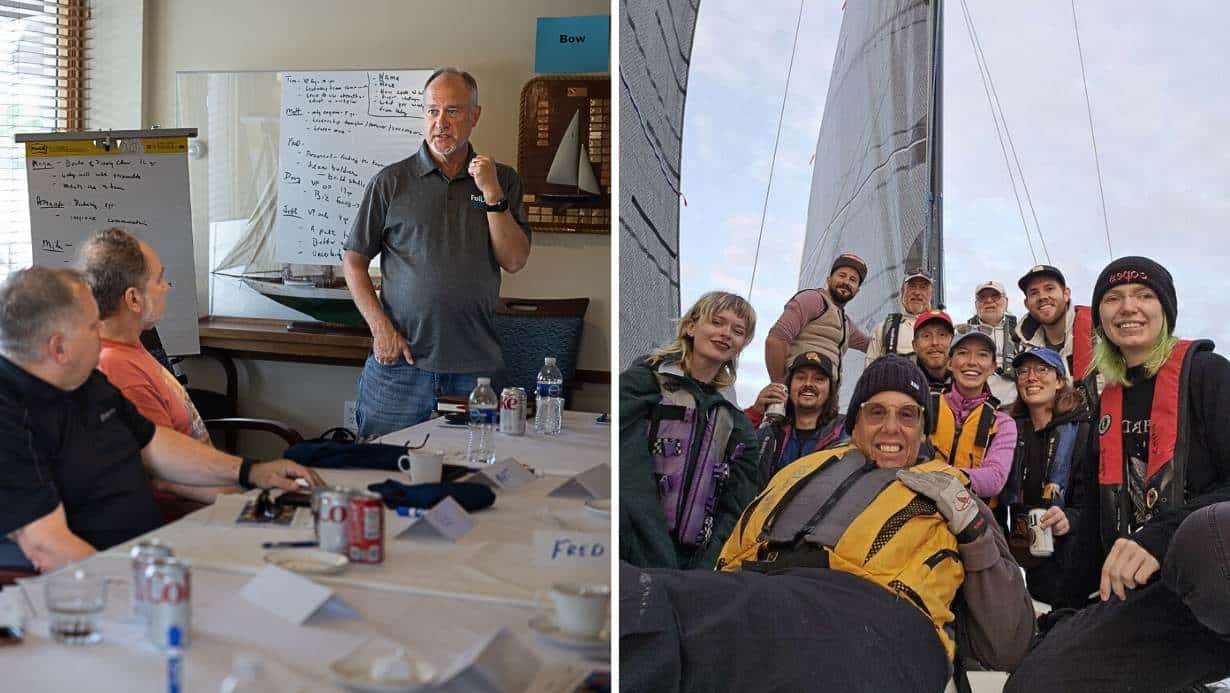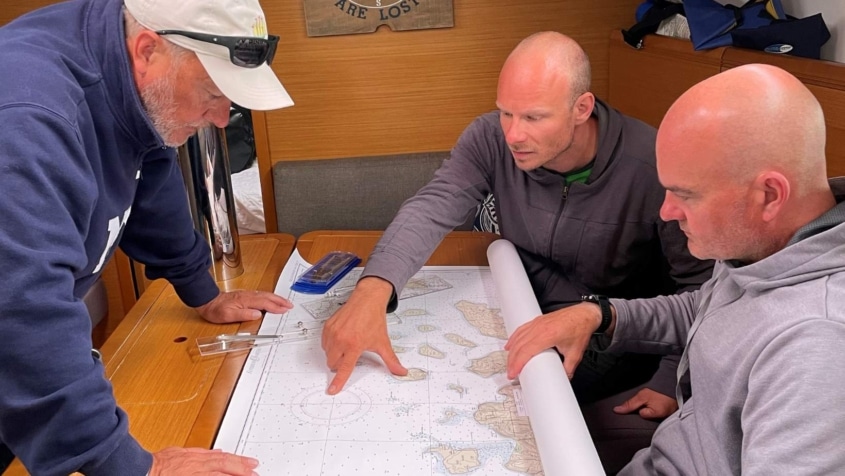The SEAsoning Effect: Team Leadership Strategies for Developing Stronger, More Resilient Teams
On a calm afternoon with a moderate breeze, sailing feels effortless.
The sun glints off the water, the sails fill gently with wind, and the boat glides forward with little more than a touch on the helm. In these moments, anyone can feel like a capable sailor.
The sea changes quickly. Clouds gather on the horizon, and the easy rhythm of the waves begins to shift.
The first gusts of wind strain the sails, and the once-stable deck lurches underfoot. The crew scrambles to adjust lines and trim canvas, their voices raised to be heard over the growing noise of wind and water.
Every movement matters. A knot tied poorly, a command delayed by even a few seconds, or a hand that hesitates on a line can turn order into chaos.
This is where the sea does its real teaching.
A storm strips away the illusion of control and reveals what calm waters never could. It shows whether the crew has practiced the skills that keep the boat steady, whether they have the experience to remain calm under pressure, and whether their attitudes toward one another hold firm when trust matters most.
That balance of skills, experience, and authentic attitudes is what we call The SEAsoning Effect.
Just as a crew is seasoned by weathering storms together, leaders are seasoned by the challenges that test and shape them.
Calm waters do not create resilience.
Pressure does.
It is in this process of seasoning, through skill, experience, and attitude, that ordinary workers turn into leaders who can guide a team through any conditions.

Effective Team Leadership Strategies: Breaking Down the SEAsoning Framework
Calm seas never reveal weakness. A boat may glide easily when the wind is steady and the water is smooth, but those conditions do not test the crew. Strength shows itself in the storm.
Leadership follows the same pattern. It is easy to look capable when business is steady. The real measure comes when pressure builds, whether through a sudden resignation, a shift in the market, or rising conflict within a team.
The SEAsoning Effect highlights why some teams struggle while others thrive. Workers who lack seasoning are easily shaken, but those who have developed skills, gained real experience, and cultivated authentic attitudes become the steady hands their teams can trust.
S: Skills
On the water, fundamentals matter most. The Navy SEALs know they cannot wait for a battle to arrive before practicing the basics.
My coach and mentor, Thom Shea, put it this way: “You don’t rise to the occasion, you sink to the level of training.”
That’s why we drill trimming sails, tying knots, and handling the boat until every action is instinctive.
Slow is smooth, smooth is fast is more than a saying.
It is the outcome of relentless practice with simple tasks that create steadiness when conditions turn chaotic.
In the workplace, leaders and their teams face their own storms.
A customer issue can escalate from a minor frustration to a major conflict in minutes.
A disagreement between two team members can spill over and affect the entire group.
A sudden budget cut can force hard decisions that ripple across the organization.
These moments reveal whether the fundamentals are in place. Those who have practiced clear communication know how to de-escalate a heated exchange before it damages trust.
Those with conflict management skills can steer a tense conversation toward resolution rather than resentment.
Teams that stay steady in their decision-making offer clarity when others feel uncertain. Those who master the basics in calm conditions are the ones who keep their teams moving forward when the pressure increases.
E: Experience
For the Navy SEALs, Sailors, and the best teams, experience is built one hour at a time. The grind of drills, long passages at sea, and the strain of working in all conditions season them for the challenges ahead.
Books and simulations may explain what to do, but real understanding only comes from doing it again and again until instincts take over.
Teams are shaped by the responsibilities and challenges they encounter every day, not just by training sessions or coursework. Think about how experience gradually shapes teams in the workplace.
- Managers grow by leading meetings, coaching staff, and handling small conflicts before larger ones arise.
- Project leads build judgment by guiding teams through both smooth launches and stressful deadlines.
- Executives sharpen vision by steering strategy in times of growth as well as in downturns.
Experience not only tests teams; it shapes them. Each success confirms what works. Each challenge reveals what must change.
Together, they season teams to stay steady, make better decisions, and guide one another with confidence when it matters most.
A: Authentic Attitudes
Among the Navy SEALs, attitude is as critical as skill or experience.
At sea, no one can afford ego, blame, or drama when the mission depends on unity. SEAL culture emphasizes humility, discipline, and service to the team.
They are taught to keep their emotions in check, focus on the mission, and adopt the mindset that leadership is not about being in charge, but about taking care of the people in their charge.
In the workplace, attitude shapes culture just as powerfully. A manager who loses their temper in a tough meeting spreads tension through the entire team. A leader who blames others when goals are missed teaches everyone to deflect responsibility.
In contrast, those who remain calm under stress, listen without judgment, and own their mistakes create trust that lasts.
Authentic attitudes season leaders because they make resilience contagious. When a leader models humility, steadiness, and accountability, the team tends to mirror those same behaviors.
Over time, that culture becomes a crew that can weather pressure together and emerge stronger on the other side.
The Cost of an Unseasoned Team
A crew without seasoning may look fine when the seas are calm, but the first storm exposes every weakness.
Teams that have not developed their skills, gained enough experience, or cultivated the right attitudes often falter when pressure rises.
In the workplace, those weaknesses carry real costs. Only 31% of U.S. employees say they feel engaged at work, the lowest level in a decade. Teams led by unseasoned leaders often suffer from higher turnover, lower morale, and missed opportunities.
Turnover is not only expensive but also preventable.
Gallup estimates that 42% of voluntary turnover could have been avoided if organizations had addressed engagement issues sooner.
Disengagement shows up in many small ways. Productivity slips, customer relationships suffer, accountability is replaced with blame, and trust begins to erode. An unseasoned leader does more than struggle personally. They can pull the whole team off course.

4 Practical Ways to SEAson Your Team
Creating a well-seasoned team doesn’t happen by accident. It requires intentional steps that build skills, stretch experience, and shape authentic attitudes. Here are four ways to start:
1. Push Leaders Outside Their Comfort Zones
On the water, growth happens when sailors take the helm in unfamiliar conditions.
For leaders, growth happens when they are given assignments that stretch their abilities.
Rotate team members into roles where they must make decisions, lead a project, or present to senior leaders.
These challenges may feel uncomfortable at first, but they build the confidence and adaptability necessary for more challenging situations later.
2. Develop a Shared Language
A crew cannot work together if each sailor uses different words for the same line or sail.
The same is true in the workplace. Shared language reduces confusion and fosters trust.
Agree on what terms like “urgent,” “done,” or “success” mean within your organization. Build a culture where expectations are clear and communication is consistent across teams.
3. Model Healthy Attitudes
Sailors watch their captain’s composure in a storm. If the leader panics, the crew follows.
In the workplace, leaders set the tone in the same way.
A manager who listens without judgment, takes responsibility for mistakes, and stays calm under stress creates a culture where others do the same.
Seasoning starts with leaders modeling the steady attitudes they want to see in their teams.
4. Invest in Experiential Training
Leadership cannot be learned from slides alone.
Sailors learn by handling dock lines, trimming sails, steering through waves, and working as a team in real conditions. Organizations should mirror that by offering hands-on leadership development.
Workshops, simulations, or on-the-water training provide leaders with the opportunity to practice skills, gain experience, and shape attitudes in a lasting way.

Equip Your Crew with the SEAsoning Effect at Full Sail Leadership Academy
Only the right amount of seasoning prepares leaders and their teams to cope in challenging times. Skills, experience, and authentic attitudes are what steady a team when pressure rises.
Full Sail Leadership Academy provides teams with the opportunity to gain that seasoning in real-world conditions.
Our workshops combine proven leadership strategies with the lessons of the sea to help teams build resilience, clarity, and trust.
Is your team ready for the next storm? Test them on the water. Contact us today!

 (c) Full Sail Leadership Academy
(c) Full Sail Leadership Academy